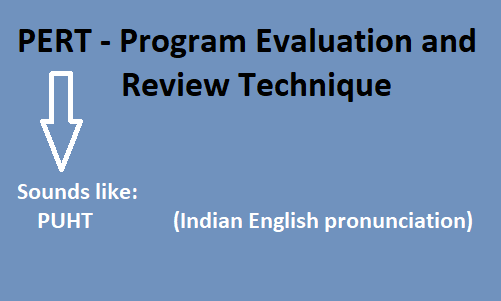One term that constantly comes up in project management is PERT—a versatile tool for planning and scheduling complex projects.
Whether you are a project manager, an entrepreneur or a management student, understanding PERT can greatly enhance your ability to handle tasks effectively.
PERT Full Form?
PERT stands for Program Evaluation and Review Technique. This methodology is widely used in project management to plan, analyse, and control the timing of tasks and projects.

PERT Origin
The PERT method was developed in the late 1950s by the U.S. Navy Special Projects Office during the development of the Polaris missile program. At the time, it was a groundbreaking approach designed to manage the complexities of a project involving multiple teams and uncertain timelines.
The methodology aimed to reduce the time required to complete a project while ensuring efficient resource utilisation.
PERT Chart Definition
A PERT chart is a graphical representation of a project’s timeline that illustrates the tasks required to complete the project, the sequence in which they must occur, and the dependencies between them. It uses nodes (or circles) to represent tasks or milestones and arrows to depict the dependencies and sequence.
The key components of a PERT chart include:
- Tasks or Events: Represented as nodes or circles.
- Dependencies: Arrows showing the order in which tasks must be performed.
- Time Estimates: Optimistic, pessimistic, and most likely time required for each task.
Importance of PERT in Project Management
The PERT methodology is invaluable for project managers, offering several key benefits:
1. Effective Time Management
PERT helps in identifying the critical path, which is the sequence of tasks that determines the project’s shortest possible duration. Managers can allocate resources efficiently to avoid delays by focusing on these tasks.
2. Risk Assessment
By incorporating optimistic, pessimistic, and most likely time estimates, PERT allows project managers to analyse risks and prepare contingency plans.
3. Complex Project Simplification
A PERT chart provides a clear and organised overview of projects with interdependent tasks, making it easier to monitor progress and adjust as needed.
4. Enhanced Decision Making
PERT charts provide actionable insights, allowing managers to make informed decisions about task prioritisation, resource allocation, and scheduling adjustments.
5. Improved Communication
The visual nature of PERT charts fosters better communication among team members, stakeholders, and clients by presenting a clear project roadmap.
Conclusion:
The Program Evaluation and Review Technique (PERT) is a timeless project management tool that continues to prove its value across industries. Its origins in the U.S. Navy highlight its capability to handle large-scale, high-stakes projects, but its application extends to any task requiring detailed planning and execution.
In today’s fast-paced business environment, leveraging tools like PERT can empower teams to meet deadlines, reduce risks, and achieve project success with precision and confidence.
If you’re looking to elevate your project management skills, mastering PERT is an essential step. Start with understanding the fundamentals, and you’ll be well on your way to easily handling complex projects.

